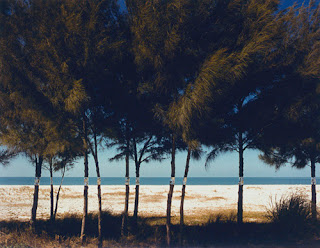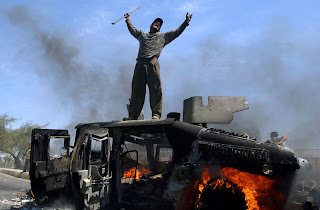Thursday, May 5, 2011
Student Choice 1: Jim Fiscus
Posted by Haley Jo at 1:43 PM 0 comments
Monday, March 28, 2011
Garry Winogrand
Posted by Haley Jo at 9:46 PM 0 comments
Ralph Eugene Meatyard
Posted by Haley Jo at 9:45 PM 0 comments
Stephen Shore
Posted by Haley Jo at 9:30 PM 0 comments
William Eggleston
Posted by Haley Jo at 6:53 PM 0 comments
Joel Meyerowitz
Posted by Haley Jo at 6:38 PM 0 comments
John Pfahl
Posted by Haley Jo at 6:23 PM 0 comments
Sunday, March 27, 2011
Muhammed Muheisen
Muhammed Muheisen, a photojournalist for Associated Press since 2001, he has travelled to places such as Iraq, Saudi Arabia, the West Bank, Gaza Strip, and Israel and returned with some of the most astounding and well known photographs of our recent years and recent turmoil around the world. He photographed the war, the lives of people and individuals involved in countless situations in these desert areas we find ourselves so commonly talking about here in America. He also, when in West Bank, began a set of photographs documenting local children that were living in refugee camps.
Posted by Haley Jo at 3:20 PM 0 comments
Friday, March 25, 2011
Andreas Gursky
I really enjoy Gursky's work, and not just from a aesthetic stand point. His photographs, while I have not had the opportunity to view any of them in person, I can only imagine that the immense scale increases the beauty of the images. He manages to photograph such simply events, such simple compositions and yet perfect the chaos in them to create an image that is no longer just an apartment complex or a crowd at a dance festival, but a beautiful work of ink on a enormous piece of paper.
Posted by Haley Jo at 1:45 PM 0 comments
Wednesday, February 9, 2011
Critique #1: Paint Chips
I admit that when first receiving the assignment via email from Chad because I had missed class the day we received it, I was quite nervous about what exactly to do for this first project. The concept of being given a simplistic theme that had to do not only with color but also with concept was slightly daunting but I strapped on my creative boots and headed out with my camera.
I came up with the first idea for Bloody Mary Morning, using a bloody alarm clock with a hand pressing snooze as my subject. I poured out some fake blood, placed my hand on the button, and started clicking the shutter release on my camera as it sat perched on the tripod. It wasn't long though till I realized my darling camera was actually not working at all. But I soon found another camera to borrow for the shots and finished up all my thought out concepts rather quickly. I managed to eventually find a time when the print lab was actually open and when all was said in done, I was happy with my work but overall just excited to have the first project under my belt and over with.
Chad typically talks a lot about being able to self-critique your own work kind of thing and it's funny because mostly everything he said about my photos on critique day was completely accurate with what I had already told myself about them as soon as they came out of the printer in Wathena.
One thing he said was that they in general needed some perfecting, but that my concept was overall pretty awesome. (Thanks Chad!) I also agree with his idea that the bloody alarm clock photo should have been just that; a bloody alarm clock. The idea would have been a lot more literal and interesting if the alarm clock was looked at as a "bloody" alarm clock and not a crime scene photograph. I'm really glad he mentioned that and noticed it because I honestly had never even thought of it in that way.
Another thing that he mentioned was that the girls head was slightly awkward on the Red Warning photograph. I'd once again have to agree.
I think out of everything Chad told me I realize I have good concepts most of the time, but I feel as if I need to let things happen more naturally instead of trying to force things from a composition standpoint and such. Overall I think this first critique has already started to help me a lot. :)
Posted by Haley Jo at 12:56 PM 0 comments






























